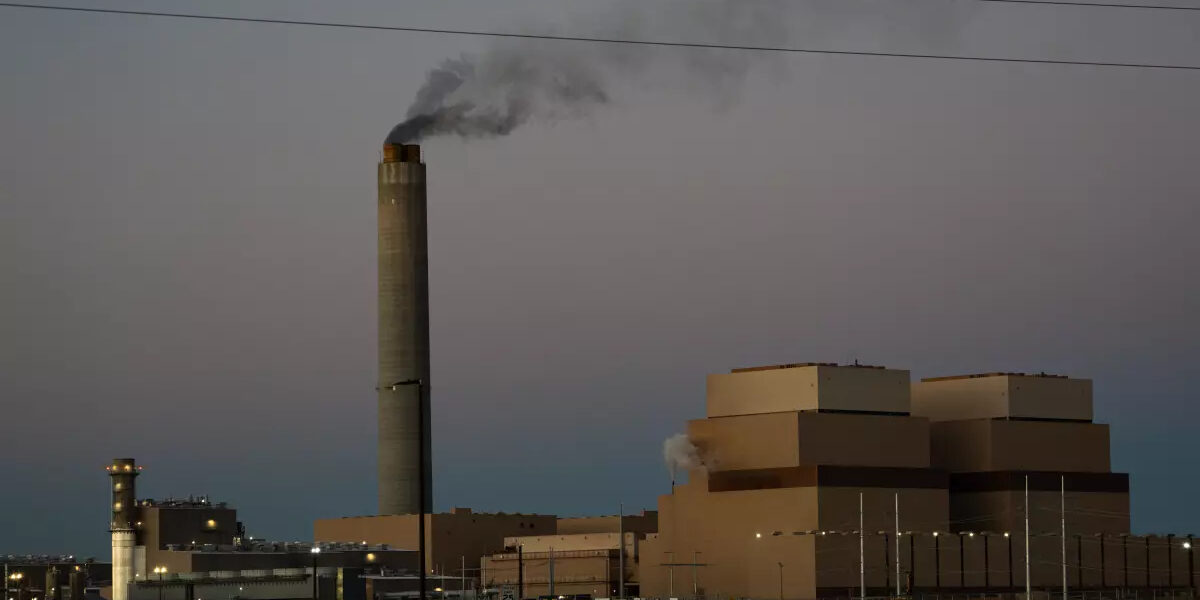If you didn’t know better, you might think the Intermountain Power Plant in central Utah was already gone.
When I visited last month, the once-busy offices were nearly empty — desks removed, boxes scattered, and photos of newly retired employees taped to a whiteboard. Outside, the coal pile that once fueled Los Angeles’ lights was a fraction of its former size.
Title Page Separator Site title
Title Page Separator Site title
“Our goal is to have no coal left at all,” said Kevin Peng, manager of external generation for the Los Angeles Department of Water and Power (LADWP).
Peng guided me through the massive coal plant that has powered Southern California for nearly 40 years. One of two huge turbines still ran, sending its final bursts of electricity west. Soon, it too will go silent — marking the end of coal power for California.
The Final Days of Coal
For decades, Intermountain Power Plant supplied affordable power to Los Angeles and surrounding cities. But its time has come. The first turbine will shut down this month, and by November, Unit 2 will follow.
“It’s the end of an era,” Peng said, smiling as steam from the turbine condensed into mist. “We make our own rain.”
Come November, that rain — and the carbon emissions that came with it — will stop.
Why California Is Moving On
Across the U.S., coal’s dominance has crumbled. Once responsible for nearly half of all electricity, it now produces less than 17%. The reasons are simple: solar, wind, and natural gas are cheaper.
In California, coal made up just 2.2% of the power supply in 2024, almost entirely from Intermountain. Over 60% now comes from clean sources — solar panels, wind farms, and hydroelectric plants — all without the pollution that worsens wildfires and heatwaves.
Jason Rondou, LADWP’s assistant general manager for power planning, said it best:
“Coal gave us affordable energy, but at a huge cost — carbon. Now we have cleaner, better options.”
A Future Fueled by Hydrogen
But Los Angeles isn’t simply walking away from Intermountain — it’s reinventing it.
Across the road, construction crews are finishing a new plant built for the next chapter of clean energy. The new turbines will run on a blend of 70% natural gas and 30% hydrogen, eventually transitioning to 100% green hydrogen — fuel made entirely from renewable power.
Here’s how it works: when L.A.’s solar and wind farms produce more energy than the grid needs, that excess power will split water molecules into hydrogen and oxygen. The hydrogen will be stored in underground salt caverns until it’s needed again — for example, during a summer heatwave.
“It’s like a long-term battery,” Rondou said. “Lithium batteries handle hours of storage. Hydrogen can handle seasons.”
Not Everyone Is Convinced
Hydrogen has sparked debate among environmental groups. Supporters see it as key to achieving a zero-carbon grid. Critics warn that it could worsen local air quality and divert resources from proven renewables.
Still, even in conservative Millard County, Utah, where Intermountain sits, local leaders welcome the transition.
“Energy keeps our community alive,” said County Commissioner Bill Wright. “We’re open to new technology — whatever it takes to stay in the game.”
The Human Side of Change
For employees, the transition has been bittersweet. LADWP minimized layoffs by offering education assistance and early retirement. But nostalgia runs deep.
“It’ll be a sad day,” said plant manager Jon Finlinson, who’s worked there since 1983. “A lot of us have spent our whole careers here.”
He paused when asked how he’d mark the final shutdown. “We don’t have a plan yet,” he said quietly.
What Comes Next
When Intermountain’s coal units shut down in November, California will finally quit coal entirely — a first for any U.S. state of its size.
Tiny traces of coal will linger in the state’s energy mix — about 0.2%, from imports and mining operations — but symbolically, the change is monumental.
Four decades ago, Intermountain was a triumph of American industry. Now, it’s becoming a symbol of progress — proof that a clean energy future isn’t a dream, but a decision.
As Los Angeles prepares to power up its new hydrogen turbines, one era ends and another begins.
Next month, California will stop burning coal.
Raise a glass — to cleaner skies and a new beginning.
